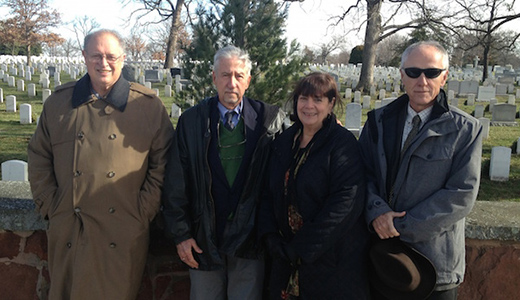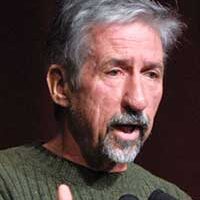
A commemoration and march on the 50th anniversary of the first national protest against the Vietnam War will be held over Apr. 29- May 2 in Washington D.C. The SDS-sponsored march on April 17, 1965, was the largest peace march in American history to that point, according to the historian Kirkpatrick Sale. It came during an American Spring of teach-ins on hundreds of campuses, the first draft resistance, and even larger protests that November.
Thousands who marched in those years will meet again at the New York Ave. Presbyterian Church in Washington to renew the bonds of a lifetime and to review the lessons for wars of today and tomorrow.
The key days are the evening of May 1 and the day of May 2, including a solemn Saturday march to the Martin Luther King Jr. Memorial.
While other American social movements have been celebrated with monuments, medals, memorials and movies, the anti-war movement is usually the subject of official forgetting. And yet it changed the lives of millions of Americans and altered the course of American history. Two presidents were ousted in part because of those protests. Presidential peace campaigns became possible for the first time. Freedom of the press was tested in the Pentagon Papers trial. Americans died on domestic battlefields, either by immolating themselves or being killed by police and guardsmen. Thousands of soldiers marched, mutinied and joined Vietnam Veterans Against the War. Hundreds of campuses were barricaded and shut down by student strikes. Millions of Americans were viscerally affected for the rest of their lives. Not one top official ever acknowledged moral guilt for the lies that propelled so many to their graves. They continued instead as incumbents in the national security establishment.
How could this not be remembered as a pivotal chapter of our country’s history?
A possible reason is that the cloud of Vietnam casts a shadow over America’s enthusiasm for war. When the first Iraq war ended, for example, President George H.W. Bush declared that, “We’ve kicked the Vietnam syndrome once and for all!” as if anti-war consciousness was a disease to be eradicated.
The real disease, however, lies in the cultural and institutional patterns that led to Vietnam, to Iraq, and beyond. The reasons for war were fabricated. The enemy was demonized as being beyond any rational negotiation. The CIA’s role was secret, as was much of the U.S. bombing. The counterinsurgency program known as “Phoenix” became a template for Iraq. The media was manipulated, infiltrated and corrupted.
Americans have had to learn to resist the military’s occupation of their minds, specifically through a multi-year, multi-million dollar Pentagon program to produce a one-sided “history” of the war for future generations. The Pentagon’s project is branded as a modest effort to thank the nation’s Vietnam veterans for their sacrifice and service, a goal shared by most anti-war advocates. But the Pentagon project quickly expanded to a “narrative” of the war itself, one that virtually eliminated the anti-war movement’s existence, while providing a laudatory history of battlefield exploits.
That began to end October 9, 2014, when the New York Times published a front-page articleraising questions about the Pentagon’s narrative and citing the formation of the Vietnam Peace Commemoration Committee with plans to contest the Pentagon on the field of history.
That led to meetings at Fort Myer, a Pentagon base adjacent to Arlington Cemetery, on January 13, 2015. Those discussions with Pentagon officials are ongoing, but it is fair to say that the officials preferred to avoid a public controversy over their version of history. Instead they emphasized returning to their original intent, to honor Vietnam veterans for their service (of the original nine million Vietnam veterans, their numbers have fallen to seven million). They told the peace delegation that they were withdrawing their plans to disseminate educational or curriculum materials. They have contracted for an independent review of their timeline and narrative by respected historians.
Further, they arranged a meeting between the peace group and the Vietnam Veterans Memorial Fund, which is creating an independent educational project at the Vietnam Memorial Wall. That meeting was brief but fruitful, leading to the possibility, however slight, that the peace movement may be included in the important educational project adjacent to the Wall. The goal is to reach a conclusion if possible by the time of the May 2 commemoration.
50th Anniversary Peace Commemoration Conference
May 1-2, Washington D.C.
Click here to register in advance
Photo: Photo: Representing the Vietnam Peace Commemoration Committee in the Pentagon talks were veteran peace activists, including Tom Hayden (second from left). | January 2015, courtesy tomhayden.com










